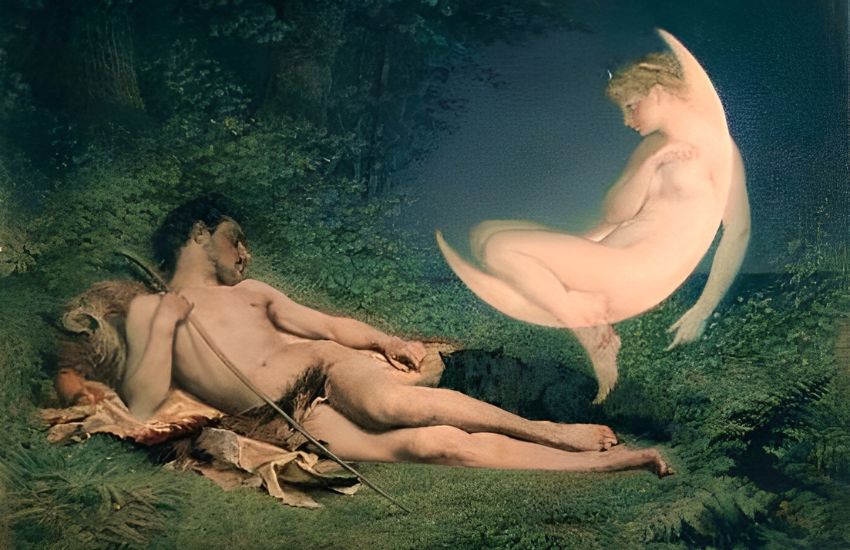
Table of Contents
Endymion was a Greek mortal who was so beautiful that he captured the heart of the moon goddess Selene. Apart from his relationship with Selene, Endymion is also known for his eternal sleep. “To sleep the sleep of Endymion” is an ancient Greek proverb that reflects the myth of Endymion. This minor character in Greek mythology still managed to inspire and captivate artists and poets centuries later. John Keats, for example, named one of his most famous poems after him. So what’s so alluring about Endymion and what is his myth?
Origins of Endymion
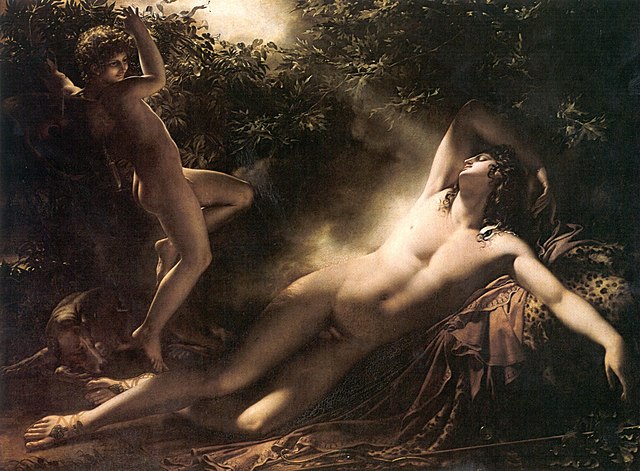
There are different stories regarding the origins of Endymion, but according to the most popular narrative, Endymion was the son of Calyce and Aethlius.
- Endymion’s Family
When Endymion came of age, he married either Asterodia, Chromia, Hyperippe, Iphianassa, or a Naid nymph. There are many perceptions regarding who Endymion married, but it’s certain that he had four children – Paeon, Epeius, Aetolus, and Eurycyda.
- City of Elis
Endymion founded the city of Elis and declared himself as its first king and led a group of Aeolians into Elis as his subjects and citizens. As Endymion grew older, he organized a competition to decide who would be his successor. Endymion’s son, Epeius, won the competition and became the next king of Elis. Epeius’ great, great, grandson was Diomedes, a valiant hero of the Trojan war.
- Shepherd in Caria
After the city’s fate was secure with Epeius, Endymion left for Caria, and lived there as a shepherd. It was in Caria that Endymion met Selene, the goddess of the moon. In some other narratives, Endymion was born in Caria, and made his living as a shepherd. Later poets and writers have further augmented the mysticism around Endymion and given him the title of the world’s first astronomer.
Endymion and Selene

Endymion was so handsome that the moon goddess Selene fell in love with him. According to one version, to be able to keep him forever young and thus preserve his beauty, Selene asked Zeus or, in some tales, cast a spell herself, to grant Endymion eternal sleep. Zeus granted Selene’s wish, and she came down to earth every night to be with Endymion. Selene and Endymion gave birth to fifty daughters, who were collectively called the Menai. The Menai became lunar goddesses and represented each lunar month of the Greek calendar.
Another version says that Zeus offered Endymion a choice – either he could die right then or sleep forever, staying forever young. Endymion chose the latter so he could stay in a perpetual state of youthfulness.
In another account, Zeus put Endymion to sleep as a punishment for his affections towards Hera, Zeus’ wife. However, this version isn’t popular and not widespread.
Endymion and Hypnos
While most narratives speak of the love between Endymion and Selene, there’s a lesser known story involving Hypnos. In this account, Hypnos, the god of sleep, fell in love with Endymion’s beauty, and granted him eternal slumber. Hypnos made Endymion sleep with his eyes open, so that he could continue to admire his beauty.
The Death of Endymion
Just as there are different narratives on the origins of Endymion, there are several accounts regarding his death and burial. Some believe that Endymion was buried in Elis, at the very place where he organized a competition for his sons. Others state that Endymion passed away on Mount Latmus. Due to this, there are two burial sites for Endymion, in both Elis and Mount Latmus.
Endymion and Moon Goddesses (Selene, Artemis and Diana)
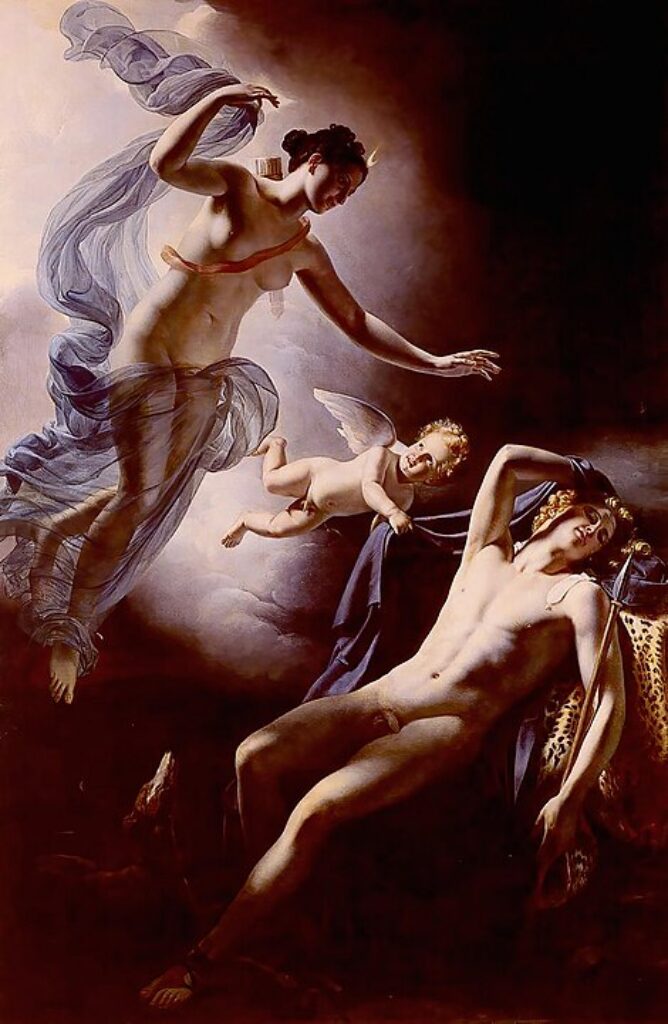
Selene is the pre-Olympian Titan goddess of the moon, and was regarded as the personification of the moon. When the Olympian gods became prominent, it was natural that many of the older myths were transferred to these newer gods.
The Greek goddess Artemis was the Olympian god connected to the moon, but because she was a virgin and was strongly associated with chastity, the Endymion myth didn’t become a part of her story. It would not have made sense for her to be connected to a romantic myth. This is probably why the myth wasn’t transferred into the later pantheon, and he continued to be associated with Selene.
In Roman mythology, Luna was the equivalent of Selene, while Diana was the counterpart of Artemis. To clarify further, while both Selene/Luna and Artemis/Diana are associated with the moon, their roles and myths are different. Selene represents the physical moon itself and its cycle, whereas Artemis/Diana is associated with the hunt and wilderness with a secondary connection to the moon.
Cultural Representations of Endymion
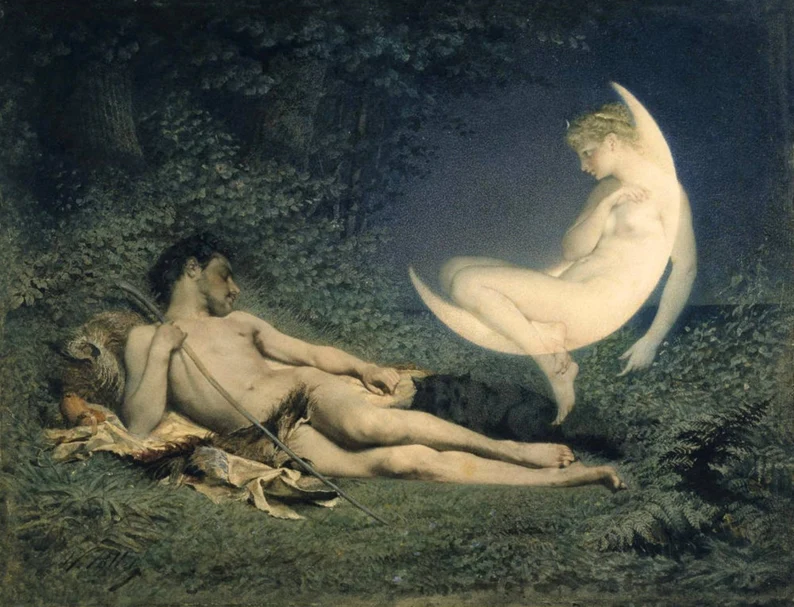
Endymion and Selene were popular subjects in Roman Sarcophagi, and were represented as an emblem of eternal love, marital bliss, pleasure, and longing. There are about a hundred different versions of Selene and Endymion in various Roman sarcophagi. The most significant ones can be found in the Metropolitan Museum of Art, New York, and the Louvre Museum in Paris.
From the Renaissance onwards, the story of Selene and Endymion became a popular motif in paintings and sculptures. Many artists of the Renaissance were fascinated with their story, due to the mystery surrounding life, death, and immortality.
In modern times, the Endymion myth has been reimagined by several poets, such as John Keats and Henry Wadsworth Longfellow, who have written imaginative poems on the Greek hero of slumber.
Endymion is the title of one of Keats’ early and most famous poems, which details the story of Endymion and Selene (renamed as Cynthia). The poem is known for its famous opening line – A thing of beauty is a joy forever.
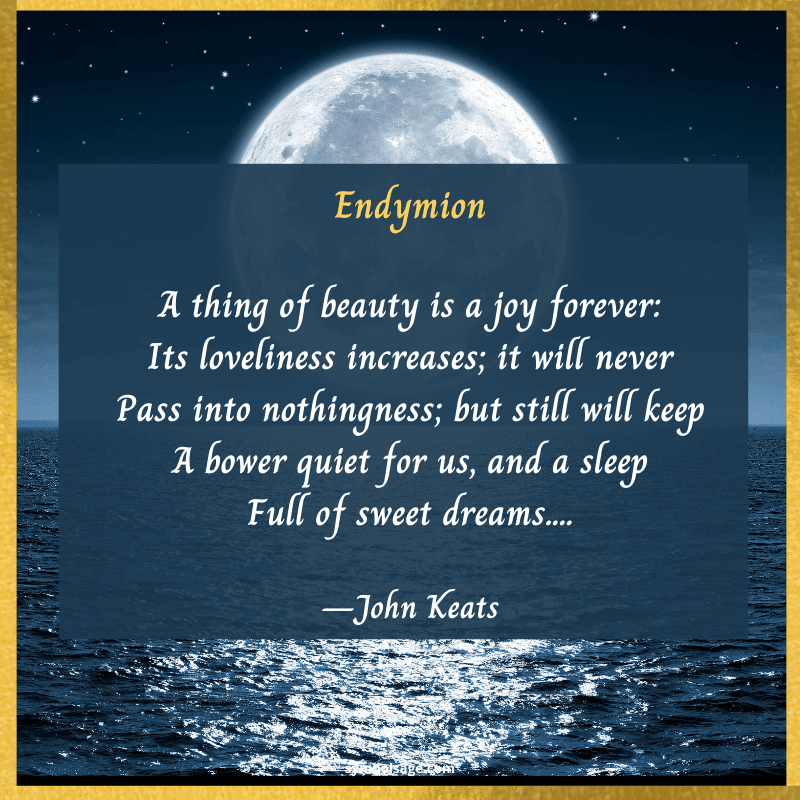
In Brief
Endymion was a noteworthy figure in Greek mythology, due to his various roles as a shepherd, hunter, and king. Although he played a minor role, and is mainly known for his beauty and eternal sleep, he had a greater influence on later art and culture than other minor Greek mythological figures. He lives on, most notably, in artwork and literature.
Related articles
Selene – The Story of Greek Moon Goddess
Luna – Roman Goddess of the Moon
Famous Children of Zeus – A Comprehensive List
Pygmalion: Greek Sculptor of Galatea








